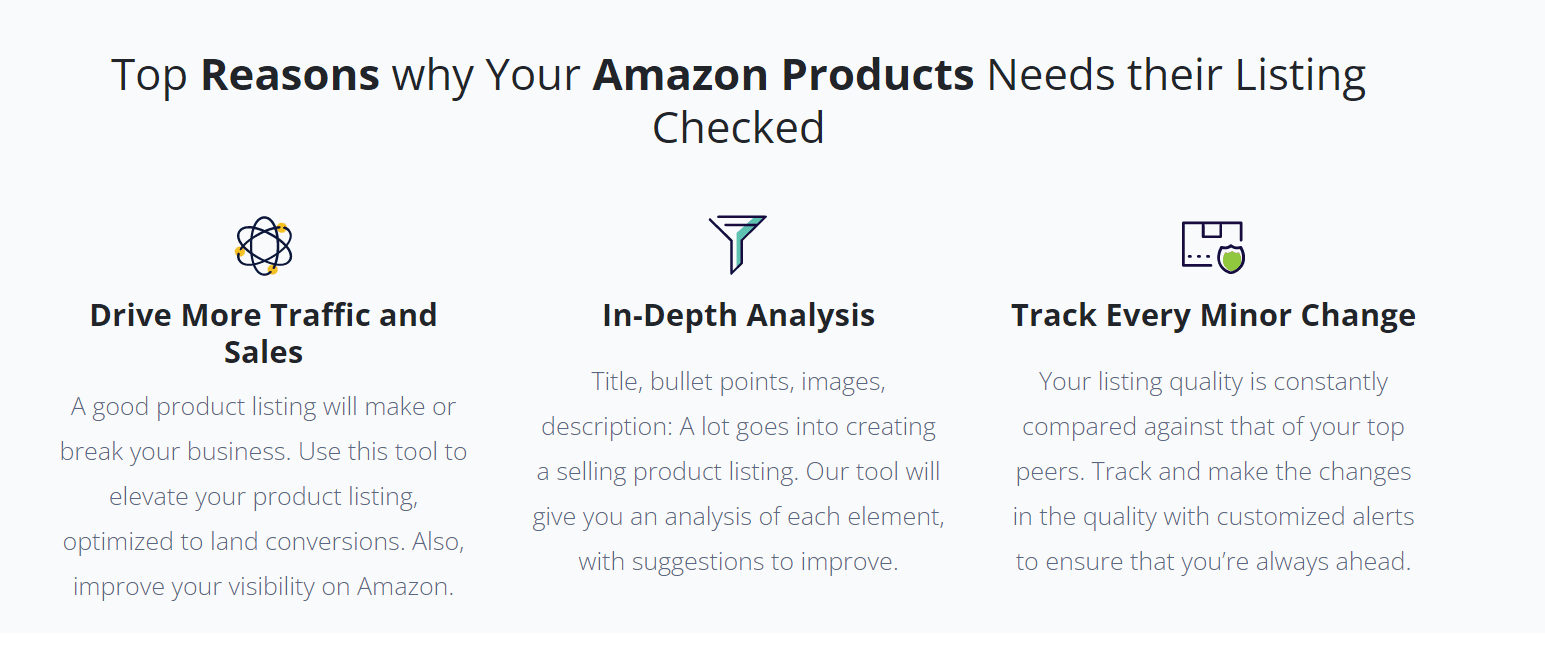When it comes to making huge money as a seller on Amazon, market evaluation is one of the most important factors. Thus, proper Amazon product research becomes absolutely essential before diving into the business full-time.
The whole process of being a seller on Amazon may seem overpowering to newbies, so they try alternative business methods like retail arbitrage.
However, every successful seller on Amazon has gone through this phase. It’s not as difficult as it seems to choose the best bankable product.
Researching products involves a number of factors such as niche selection, brand restrictions, competition, selling fees, and so on.
Over the past few years, Amazon has changed the way people search for products. Old methods may no longer be effective.
Here are ten tips for researching Amazon products described in this detailed guide.
We will give you a bonus tip that will allow you to finish the entire process in just a few minutes.
What Is Amazon Product Research?
Product research at Amazon focuses on identifying high-sales items based on current market trends.
We’re looking for products that we can get for cheap, yet sell for a good profit margin with competitive prices.
In this video, you’ll learn that price isn’t everything.
You might be able to sell gym socks at $2 a pair, but if the socks aren’t that good, the negative feedback from your customers will result in low sales.
To achieve high sales and positive reviews, you need to look for those “winner” products.
What Are the Benefits of Product Research?
In order to start selling on Amazon, the most important step is to find a great product.
FBA is not a good investment unless you come up with high-demand, low-competition, and private-label products.
Amazon has evolved so much that just slapping on a logo and designing custom packaging isn’t enough.
These old tricks that used to work don’t work anymore due to an increase in sellers and stricter selling policies.
Amazon’s top-selling products should be listed on your website. If similar items do not generate enough sales, then do a deep analysis. Since you will never want to trade items that people aren’t even looking for, you must follow this step.
You can continue checking their statistics like sales, reviews, keyword search volume, and similar products after you have compiled a list of potentially profitable products.
You should choose products with great potential, and good demand, and still be below competitive.
What Makes A Product Opportunity Amazing
If you are making a business decision, consider the following criteria, since they will help you make the right decision.
Criteria for Amazon products- Here are the key aspects to keep in mind when developing an Amazon product:
Low seasonality: Look for products that will sell year-round and not just in season.
No legal problems: Don’t pick up products with trademarks or legal problems.
A price that is greater than 18 dollars: By having a higher price per unit, you can easily increase your sales potential by millions of dollars.
Lightweight and small: The products with these features tend to generate more sales than those without. Firstly, it is due to the lower shipping charges. Secondly, it is due to reduced storage.
Room for improvement: Choosing a product that is better than your competitors increases your chances of making more sales.
Checklist Of Amazon Product Research Requirements
Here is a quick checklist of what you need to do in order to develop a great product. Following these guidelines makes your job easier.
- The price of a product that is between $10 and $50
- A product that makes at least ten sales a day
- In the main category, similar products that have a best seller ranking of 5,000
- On Amazon, the top 3 related keywords receive over 50,000 searches per month
- It is not a seasonal product. It can be sold all year long
- On the first page, there are 2 to 3 products with less than 50 reviews
- Lightweight and small products (under 3 pounds)
- The product is not associated with any brand names or trademarks
- Set up prices can be as low as 25% of the sale price of a product
- There is room for improving the current listings and optimizing the products
- There are multiple keyword opportunities related to products
- Procuring products from China is quick and easy
- There should be no fragility in the product
- Your brand can be expanded with related products
- Can make a better product than similar products in the market
- Recurring purchases are encouraged by the product
- A legal issue should not arise with the product
Product Categories To Avoid
It is important to realize that not all items are created equal if you are going to be a “private label seller.”. There is a reason why you should refrain from purchasing complex products like cameras, photos, paintings, home appliances, etc.
The biggest headache later on is dealing with products that have complications with shipping and manufacturing. As a result, huge products are involved in liability issues, quality assurance, returns, and customer reviews.
Foods, lotions, creams, nutritional supplements and anything else “in” or “on” your body can pose risks. It is best to stay away from such products.
As well as shoes and clothing, there are other categories to take note of. Branding might not be effective because everyone has their own preferences.
How to Verify Demand for a product during Product Research
If you find a product with high margins and low competition, but no one wants to buy it, it won’t matter if it is excellent. The demand for your product must therefore be accurately estimated.
In the following sections, we are going to discuss the solid methods for measuring demand for a particular product! You can use these metrics to ease the risk associated with product research on Amazon.
#1 Price
Products between $15 and $50 are within the range of impulse purchases. Customers at this price range would not spend time trying to figure out which product is best for them. As long as he thinks your product fits his needs, you win.
#2 Sells around 10 products per day
For example, if I sell ten units per day at a $30 price and profit $10 after Amazon FBA fees, shipping, promotions, etc
My net monthly revenue is $30 x 10 units x 30 days = $9000.
I will earn a profit of $10 x 10 units per day x 30 days/month = $3000 profit per month if everything goes according to plan.
In general, the more units sold per day, the higher the profits. However, products with daily sales of at least 10 units are the best basis for choosing products.
#3 Similar products have a BSR of 5,000 or lesser in the main category
It can be challenging to figure out how often a product sells. A product’s best seller rank provides an indication of how well it sells within its category.
BSR of 20,000, on the other hand, will sell A LOT less than BSR of 2,000 for the same product. When you hit the top spot, you don’t want to pick a product that only sells a few units.
When you reach the top spot and have 3-5 products with a BSR ranking of 5000 in the main category, you can expect a huge number of sales. The more low-BSR products there are, the better the chance of success.
This product ranked in the 421st position in the ‘Baby’ category. You can be sure to sell a lot of units in ‘Baby’ since it is such a large category.
A typical Amazon BSR for a product in “Pets and Supplies” is 17,309. Similarly, a BSR of 296 is also displayed for the same product under “Basic Collars”. In this case, the “Pets and Supplies” category is what you want to focus on for an accurate estimate.
You can use SellerApp for Amazon product research to determine the sales and revenue estimates of a particular product. SellerApp estimates both the lowest and the highest demand for products within their respective categories.
#4 Top 3 product keywords together have 100,000+ monthly searches
It is also important to find out how many users are searching for your product on Amazon or Google to determine whether there is sufficient interest in your product.
However, it is more important to find out what the demand is for your primary keywords since Amazon has a conversion rate ranging from 12 – 17 percent! In other words, if we get over 100,000 monthly searches on Amazon for our top three product keywords, we are in a good position to sell.
#5 Lightweight – preferably under 2-3 pounds.
FBA fees increase with the weight of the product. A larger and heavier product results in a lower profit margin.
A product that weighs more than 2 pounds can have very high shipping costs.
#6 About 2-3 products with < 50 reviews on page 1
The number of reviews on the first page can give you an idea of how difficult it is to gather sales, however it is not an extremely important rule, especially in categories with high sales. Regardless of how many reviews you receive, you can still gain insight into how easy it is to secure the top spots.
As many points as you can verify on the checklist, the better. There are no hard and fast rules to follow, but these are the fundamentals of a good start.
#7 Is there Year-Round Demand?
When researching Amazon products, it’s important to know this information. Are there any products that are only bought during certain seasons? Are these products consistently bought throughout the year?
You can determine this by typing your main keyword into Google Trends. You can then determine whether or not your product is seasonal.
An example of a non-seasonal product would be one with small swings and consistently purchased throughout the year. A seasonal product can be determined fairly easily, but it is important to know before placing an order, because you will likely have stock sitting in warehouses if your order is for a seasonal item. Although some people like to sell seasonal products, I’d rather sell them all year round.
#8 No big brands in the product category
This is something that directly relates to the buyer mentality. An obvious choice for a shopper is a well-known brand over a new brand or product.
It is better to begin with a product that has relatively little competition rather than competing with a product that already has famous brands and competes with them for sales.
Find your Winning Product Idea
This guide should help you understand the importance of conducting proper product research for an online business. The tips and strategies laid out above will help you launch a successful product.
Quick Links


